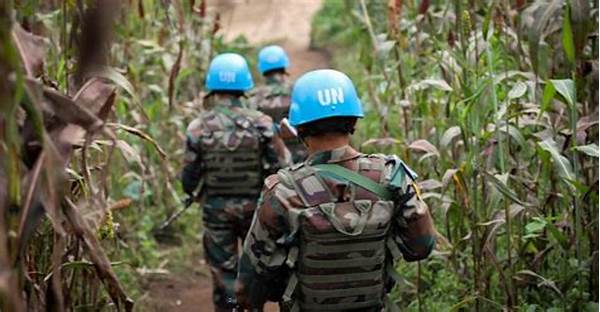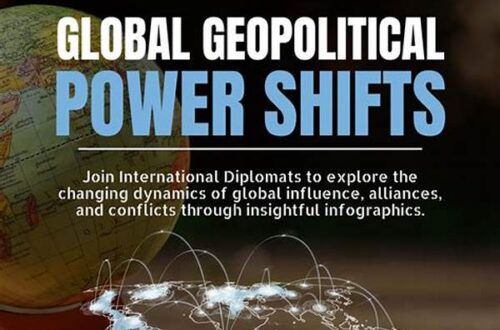The Role of Peacekeeping and Stabilization Missions
Peacekeeping and stabilization missions play a pivotal role in maintaining international peace and security. They are primarily deployed in regions undergoing conflict or post-conflict situations, with the core objective of shaping an environment conducive to lasting peace and development. These missions typically consist of military, police, and civilian personnel drawn from various countries, working collaboratively under the auspices of organizations such as the United Nations.
In the contemporary global context, peacekeeping and stabilization missions are not only responsible for mitigating immediate threats but also for supporting political processes, protecting civilians, and assisting in the disarmament, demobilization, and reintegration of combatants. Their mandate often extends to building institutions and promoting governance, thereby facilitating a sustainable peace process. These missions leverage an array of resources and expertise to address the multifaceted challenges encountered in volatile regions.
Furthermore, peacekeeping and stabilization missions seek to foster a stable environment by engaging local communities, supporting human rights initiatives, and providing humanitarian aid where necessary. The success of these missions is contingent upon the commitment and cooperation of international partners and the adherence to international laws and principles. Thus, they are a testament to the global community’s dedication to upholding international peace and security.
Objectives of Peacekeeping and Stabilization Missions
1. Conflict Mitigation: Peacekeeping and stabilization missions aim to reduce violence and hostilities in conflict zones, ensuring the protection of civilians and preventing the escalation of conflict.
2. Support Political Processes: These missions facilitate political dialogue and negotiations to promote political stability, reconciliation, and democratic governance.
3. Humanitarian Assistance: By providing humanitarian aid and support, these missions alleviate human suffering and aid populations affected by war.
4. Institutional Building: They assist in establishing robust governmental institutions and promoting legal frameworks to secure long-term stability.
5. Fostering Development: Peacekeeping and stabilization missions contribute to creating an environment conducive to economic growth and development, ensuring a peaceful transition to stability.
Challenges Faced by Peacekeeping and Stabilization Missions
Peacekeeping and stabilization missions are often confronted with a myriad of challenges, ranging from operational difficulties to complex political environments. One of the significant hurdles is the prevalence of asymmetric threats, including terrorism and insurgency, which require adaptive and responsive strategies. These missions must operate with limited resources while navigating bureaucratic constraints and ensuring the safety of their personnel.
Furthermore, the political complexities in host regions can pose substantial barriers to successful intervention. Peacekeeping and stabilization missions must operate sensitively within a web of national and international politics to avoid exacerbating tensions. The lack of political will or commitment from local entities can impede progress, necessitating diplomatic engagement and negotiation.
Despite these obstacles, peacekeeping and stabilization missions are vital instruments for the maintenance of global peace. They require continued innovation, adaptive strategies, and international cooperation to address emerging challenges effectively. Thus, these missions remain a cornerstone of international efforts to manage conflicts and facilitate peacebuilding.
Innovations in Peacekeeping and Stabilization Missions
Peacekeeping and stabilization missions are continually evolving to address the changing dynamics of global conflicts. Technological advancements have been pivotal in enhancing the effectiveness and efficiency of these missions. For instance, the use of drones and satellite imagery has improved intelligence gathering, enabling more precise and informed decision-making processes.
Training and capacity building have become fundamental components of peacekeeping and stabilization missions, focusing on cultural sensitivity, negotiation skills, and the protection of human rights. These efforts ensure that personnel are adequately prepared to navigate the complexities of different socio-political contexts. Additionally, the emphasis on collaboration with local communities has enhanced the legitimacy and acceptance of these missions, fostering trust and cooperation.
International partnerships have also been strengthened to pool resources and expertise, thereby enhancing the overall capability of peacekeeping and stabilization missions. The integration of a multi-dimensional approach, encompassing military, political, and humanitarian strategies, has proven crucial in addressing the challenges of contemporary conflicts. Through ongoing innovation and collaboration, peacekeeping and stabilization missions continue to adapt to the ever-evolving landscape of international security.
The Importance of International Cooperation
The success of peacekeeping and stabilization missions is heavily reliant on the commitment of the international community. Multilateral efforts, led by organizations such as the United Nations, regional bodies, and individual nations, ensure that these missions are adequately resourced and supported. International cooperation provides the political backing and financial support necessary for the effective deployment and sustainability of these operations.
Moreover, international cooperation fosters the sharing of best practices, expertise, and technology, enabling peacekeeping and stabilization missions to address complex challenges more effectively. This collaborative approach strengthens the global governance framework and ensures a harmonized response to conflicts threatening international peace and security.
In conclusion, the commitment to international cooperation and collaboration is indispensable for the success of peacekeeping and stabilization missions. The dedication of the global community, in conjunction with innovative strategies and adaptive responses, is essential for building a peaceful and stable world.
Conclusion
In summary, peacekeeping and stabilization missions remain crucial pillars for the global maintenance of peace and security. They are pivotal in supporting conflict-affected regions by mitigating violence, fostering political reconciliation, and promoting sustainable development. Through international cooperation, peacekeeping and stabilization missions can navigate the complex political landscapes, address various threats, and contribute to a peaceful global order.
The evolving nature of global conflicts necessitates that peacekeeping and stabilization missions continually adapt their strategies and operations. By incorporating technological advancements, prioritizing capacity building, and engaging local communities, these missions reinforce their effectiveness in achieving long-term stability. The commitment of the international community, alongside innovative and cooperative approaches, underpins the success of peacekeeping and stabilization missions, ultimately contributing to a safer world for future generations.





